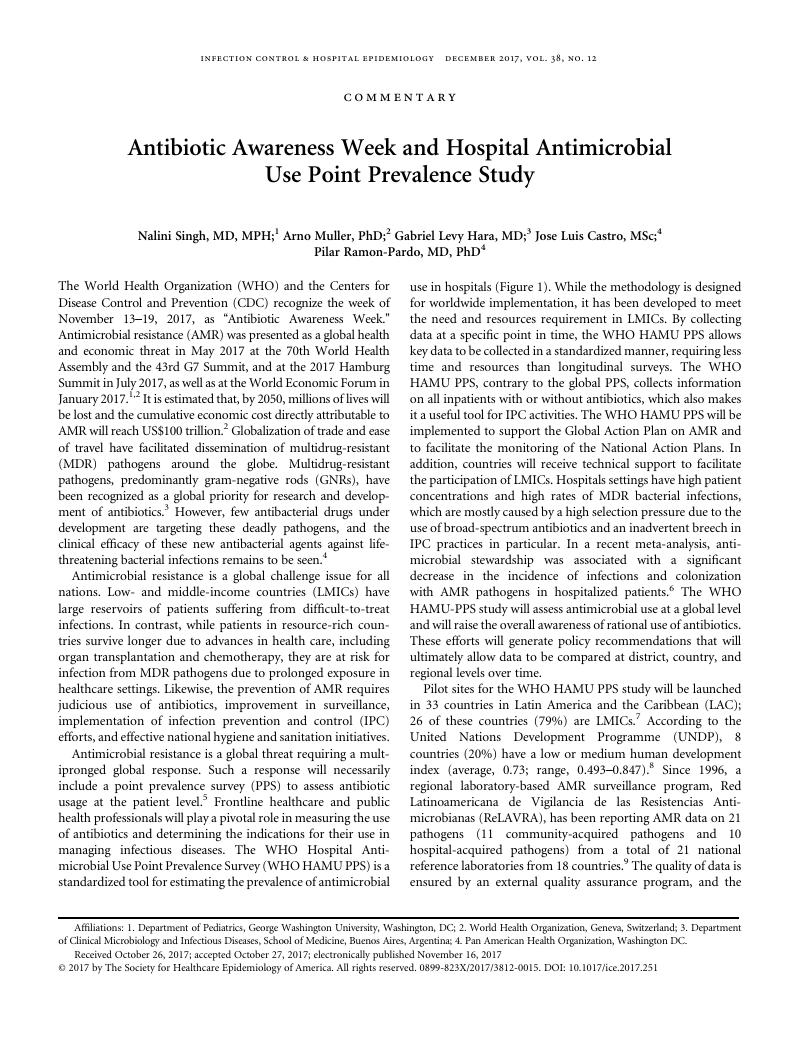Article contents
Antibiotic Awareness Week and Hospital Antimicrobial Use Point Prevalence Study
Published online by Cambridge University Press: 16 November 2017
Abstract

- Type
- Commentaries
- Information
- Copyright
- © 2017 by The Society for Healthcare Epidemiology of America. All rights reserved
References
REFERENCES
- 1
- Cited by




